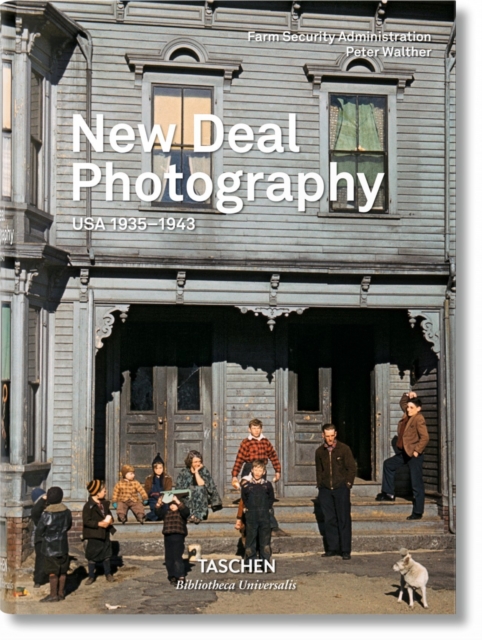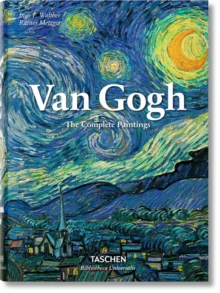
New Deal Photography. USA 1935-1943 Hardback
by Peter Walther
Part of the Bibliotheca Universalis series
Hardback
Description
"Through these travels and the photographs, I got to love the United States more than I could have in any other way." - Jack DelanoAmid the ravages of the Great Depression, the United States Farm Security Administration (FSA) was first founded in 1935 to address the country's rural poverty.
Its efforts focused on improving the lives of sharecroppers, tenants, and very poor landowning farmers, with resettlement and collectivization programs, as well as modernized farming methods.
In a parallel documentation program, the FSA hired a number of photographers and writers to record the lives of the rural poor and "introduce America to Americans."This book records the full reach of the FSA program from 1935 to 1943, honoring its vigor and commitment across subjects, states, and stylistic preferences.
The photographs are arranged into four broad regional sections but otherwise allowed to speak for themselves-to provide individual impressions as much as they cumulatively build an indelible survey of a nation. The images are both color and black-and-white, and span the complete spetrum of American rural life.
They show us convicts, cotton workers, kids, and relocated workers on the road.
We see subjects victim to the elements of nature as much as to the vagaries of the global economic market.
We find the work of such perceptive, sensitive photographers as Marion Post Wolcott, Jack Delano, Russell Lee, Walker Evans, Ben Shahn, and Dorothea Lange, and read their own testimonies to the FSA project and their encounters with their subjects, including Lange's worn, weather-beaten and iconic Migrant Mother. What unites all of the pictures is a commitment to the individuality and dignity of each subject, as much as to the witness they bear to this particular period of the American past.
The subjects are entrenched in the hardships of their historical lot as much as they are caught in universal cycles of growing, playing, eating, aging, and dying.
Yet they face the viewer with what is utterly their own: a unique, irreplaceable, often unforgettable presence.
Information
-
In Stock - usually despatched within 24 hours
- Format:Hardback
- Pages:608 pages
- Publisher:Taschen GmbH
- Publication Date:23/05/2016
- Category:
- ISBN:9783836537117
Information
-
In Stock - usually despatched within 24 hours
- Format:Hardback
- Pages:608 pages
- Publisher:Taschen GmbH
- Publication Date:23/05/2016
- Category:
- ISBN:9783836537117










